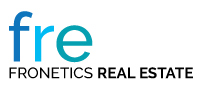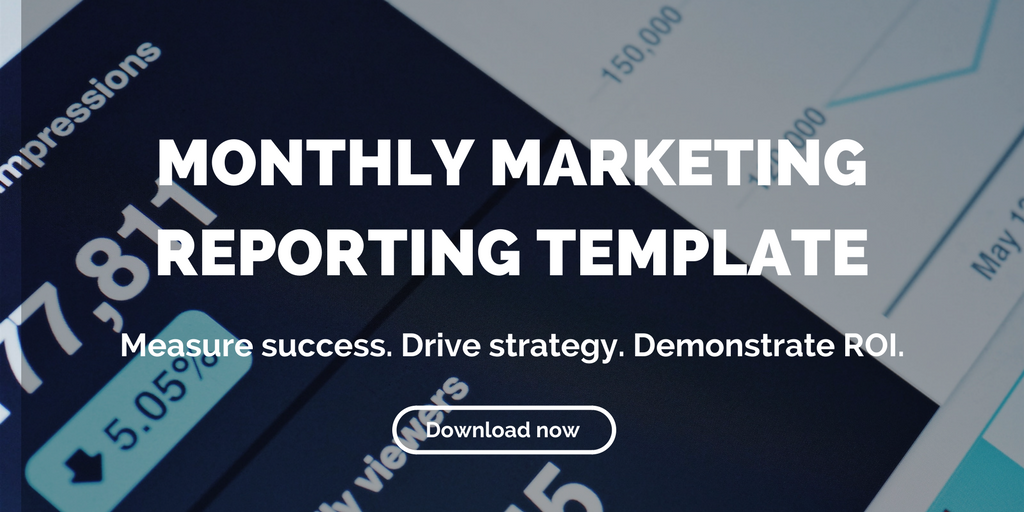Your search results for "Measuring success"

How to Measure Social Media ROI with Google Analytics for Real Estate
Measuring social media ROI can be a daunting task, but Google Analytics can help. Gauge the effectiveness of your social media strategy using these four data points in Google Analytics.
Many real estate businesses struggle with measuring social media ROI. Even for seasoned content marketers, the collection of data is one of the most daunting tasks. But it’s important to get it right, for several reasons:
To understand how your strategy is working.
- To determine where changes need to be made.
- To allocate appropriate resources.
Don’t waste time trying to track down information on your various social accounts to measure social media ROI when you can find the most pertinent information with a single tool. The best part is: You’re probably already using it. (And it’s free!)
You need data to measure social media ROI
Google Analytics is an incredible tool for businesses large and small looking to gain insight into the who, when, and where of their web traffic. And while it may seem intimidating to the novice, it’s very easy to use once you know where to find what you’re looking for.
Here’s how to start gauging the effectiveness of your social media strategy — and measure social media ROI for real estate.
Step 1: Look at where your traffic is coming from.
How much of your traffic is coming from social media? Google Analytics will provide an overview of the overall traffic sources that deliver visitors to your website, including traffic from social media. This high-level view of your traffic includes:
- Search (people clicking through from Google or Bing)
- Social (Twitter, Facebook, etc.)
- Direct (people typing your site in their browser or bookmarks)
- Referral (people clicking links from other sites to get to you)
- Paid search
- Other
To access this report in Google Analytics, go to Acquisition > All Traffic > Channels.
Go a step further and review the volume of traffic that comes from specific social media networks, by clicking on Acquisition > Social > Network Referrals.
It’s important to have a diverse mix of traffic sources, which should be reflected in the traffic sources report. If a large portion of your traffic comes exclusively from one source, especially if that source is not social media, it is time to reconsider your social media strategy. Similarly, if one network is driving most of your traffic, you should examine when and what you are posting in the non-performing channels.
Step 2: Determine revenue derived from posts.
Make sure to include links back to your site when you post on social media so that Google Analytics can track and analyze them. You’ll want to add a UTM code (aka UTM parameter), which is text added to the end of a URL (after the “?”) to identify the success of a campaign. As an example, the UTM code is in boldface below:
You can set unique UTMs for all of your social media, per channel, or even per update. By analyzing your different UTM parameters, you can determine which URLs are most effective in driving users to your content.
Set UTM parameters through Google’s URL Builder. Once your parameters are set, you can go to Acquisition > Campaigns > All Campaigns to see the revenue from any individual UTM tag, like a post or tweet.
Step 3: Look at how your content is being digested.
Analytics allows you to see how long a visitor stayed on your site, (use the Duration goal to find out). Examine how content and properties resonate with the social media audience by using Set up the Pages/Screens per Session goal or learn how many times visitors from social media play website video with Create an Event goal for specific tracking.
Step 4: What is social media bringing you in conversions?
Google Analytics has conversion funnel reports that show how much social media is contributing to conversions. To set up conversion funnels in Google Analytics:
Use the Goals section and connect any type of conversion event.
- Access your funnel report through Conversions > Multi-Channel Funnels > Top Conversion Paths.
These four insights from Google Analytics can help you determine how effective your social media strategy is in terms of traffic, direct revenue, visitor behavior, and conversions. Use this information to continually measure social media ROI and refine your strategy to get the most out of your social media presence for your brand and properties.
Related posts:
- What Metrics Should You Track in Real Estate Marketing?
- Measure Social Media Success in Terms of Potential, not Dollar Amount
- The Metrics You Should Be Measuring in Real Estate Marketing (Hint: Not Vanity Metrics)
Your search results for "Measuring success"

This Is the First Thing You Should Do in Real Estate Marketing
Without a documented strategy, your content marketing is doomed to fail.
Content marketing is one of the most effective ways to elevate your property’s reputation in the market, reach prospective buyers or tenants, and increase occupancy. Yet while many real estate marketers are using content marketing, not all feel their efforts are successful. Why do so many organizations feel they are failing? Simply put, they do not have a documented strategy in place.
You would never operate your business without 1) creating a strategy, 2) documenting it, and 3) following the strategy. Nor should you launch a marketing program without having a clear idea of what you want to accomplish and how you plan to do that.
A documented strategy = a successful strategy
A content marketing strategy outlines the methods by which you will target, reach, and engage your audience. Research and execution of these tasks can be quite complex. Writing out a plan and assigning appropriate resources can offer clarity and guidance to your organization throughout the course of your marketing efforts.
Also, remember that content marketing is more of a marathon than a sprint, and achieving results often takes months, even years. Documenting your strategy allows your team to keep focused on your goals and your plan for achieving them in the interim.
Here’s why you should take the time to draw up a plan and then write it down.
1) A documented content marketing strategy is more successful than an undocumented strategy or no strategy at all.
Research and analysis conducted by the Content Marketing Institute (CMI) reveals that only 27% of B2C marketers surveyed have a documented content marketing strategy. 50% of those surveyed said they had a strategy, it just isn’t written down. According to the CMI, “That’s a huge problem. If it’s not written down, then it probably doesn’t really exist.”
Because effective content marketing requires a team effort with a cohesive vision, having an undocumented strategy means you might as well not have a strategy at all. For everyone to be on the same page, it’s important to quantify goals, set a detailed plan, and document results.
2) A documented content marketing strategy helps measure ROI.
Many real estate companies struggle with content marketing or have trouble garnering support for the program because return on investment is notoriously difficult to measure. In fact, more than half of marketers say one of their top challenges is measuring content effectiveness (57%) and/or measuring the ROI of their content marketing program (52%).
Having a documented strategy in place gives your organization measurable goals against which to compare your results. Your strategy should:
- Document what you hope to achieve through content marketing — more leads, higher conversion rates, more social media followers, etc.
- Outline a specific methodology for executing those goals
- Assign human resources to each of the tasks
- Designate intervals at which to check in and evaluate/adjust your efforts
- Offer a timeframe for completion
Documenting your strategy in such a way clarifies where you are investing time and resources so that calculating ROI is less of an abstract process.
Related posts:
- The Metrics You Should Be Measuring in Real Estate Marketing
- 6 Marketing Tasks Real Estate Marketers Can Outsource
- Social Media Can Be a Strategic Weapon in Real Estate Marketing
Your search results for "Measuring success"

How to Measure Brand Awareness: A Guide for Real Estate Marketers
If you want to measure brand awareness for your property, use these 4 metrics, which indicate if prospective buyers or renters know about it.
When it comes to selling property — particularly luxury properties — growing brand awareness is an important goal. Prospective buyers need to know that your property exists and that it can provide the kind of lifestyle they’re looking for.
Measuring how well you’re doing at getting the word out about your brand and property/properties is critical to optimizing your marketing strategy. But measuring brand awareness can be tricky.
To help you quantify the results of your efforts, here are 4 metrics that indicate that you’re building brand awareness.
4 metrics to measure brand awareness
1) Social media reach
The reach of your social content has a direct impact on your brand awareness. As your social media reach grows, so does your potential brand audience.
SharedCount is a free online tool that allows you to track the number of times a piece of content has been shared on social media, including Facebook, LinkedIn and Google. It’s an easy way to get basic information about your social reach, so you can spend less time tracking tweets and more time producing your content.
2) Brand mentions
There’s a great deal of value to be gained from monitoring discussions about your brand and properties online. Tracking brand mentions can lead to honest feedback and objective insight from potential buyers.
There are several options you can use to track brand mentions. We prefer the convenience of Google Alerts, which allows you to easily set up a custom alert.
Or Hootsuite can track brand mentions, as well as specific keywords and phrases, (like individual properties or neighborhoods) across all of your social media feeds.
3) Blog shares
By adding a share bar to your blog posts, you make it easy for readers to share your blog content on social networks, spreading awareness about your content and your properties through the amplifying effect of social media.
These share bars are easy to set up and even easier to monitor. By measuring your average number of shares per blog, you can track what content your users are drawn to and what pieces fall flat.
4) Search volume
One of the main sources of traffic for most websites is through simple searches. If people are searching for your company or properties, that’s a pretty solid indication that they are aware of your brand.
Using online tools, such as Google AdWords or Moz, you can track the searches for your listings, blogs, social media platforms, and any other variation that you find useful. These tools are free, easy to use, and perfect for determining if your brand is popping up when potential buyers are searching.
How do you measure brand awareness?
Related posts:
- 10 Quick Ways to Grow Brand Awareness
- Social Media Trends for 2018 Real Estate Marketers Need to Know
- Social Media Can Be a Strategic Weapon in Real Estate Marketing
Your search results for "Measuring success"

Why You Should Benchmark Real Estate Marketing Against Competitive Properties
Taking the time to benchmark real estate marketing gives you context for your performance — and shows you what prospective buyers/tenants see when searching for properties.
When people are searching the internet for apartments or condos, what are they seeing? Part of an effective, data-driven marketing strategy is regularly taking the time to benchmark real estate marketing against competitive properties.
We all know that competition drives results. Take Elaine Thompson and Michael Phelps. In August 2016, Thompson claimed the title of the world’s fastest woman, and Michael Phelps became the most decorated Olympian of all time. They achieved these incredible feats by continuously pushing themselves to do better — and they weren’t just tracking and measuring their personal performance. They were keeping track of the performance of their peers and competitors. The data helped to give them the drive they needed to improve their own performance.
Why benchmark real estate marketing?
The same is true when it comes to measuring real estate marketing performance.
Looking inward, focusing on key performance indicators (KPIs) like website traffic, social media engagement, and lead conversion metrics is important. But these metrics will only get you so far.
You need to be looking at what’s happening outside your business and benchmark real estate marketing performance against competitive developments, properties, and even companies. That way, you’ll get the knowledge and drive you need to improve your performance and chance of success.
In addition, keeping track of what your competitors are doing can help you to identify threats and strategic opportunities for your properties. If you see that everyone is advertising on Trulia, for example, and you’re not, you might want to think about trying it. Or, you might notice that no one in your market is leveraging Facebook Marketplace property listings yet. Is this a place where you could gain strategic advantage?
Who should you be benchmarking against?
While the obvious choice is to benchmark against properties that directly compete with yours, it’s also a great idea to benchmark real estate marketing against market leaders. By taking this more global view, you can gain ideas and intelligence from top performers in your area. You may learn something that you can bring to your property’s marketing plan that will help edge out your competition.
Related posts:
- What Metrics Should You Track in Real Estate Marketing?
- Social Media Can Be a Strategic Weapon in Real Estate Marketing
- How Pay-Per-Click Helped This Property Get 54 Leads
Your search results for "Measuring success"

5 Effective Ways to Use Instagram for Your Luxury Real Estate Brand
With its highly visual platform and growing user base, Instagram is a natural fit for real estate marketing. Here are five ways to make Instagram work for your luxury real estate brand.
Highlights:
- Instagram posts should reflect your luxury real estate brand and maintain the overall tone you set through other marketing efforts.
- Successful brands on Instagram pay close attention to how their posts reflect their brand’s message.
- Hashtags allow your posts to be seen by users outside of your circle of followers, so using relevant, industry-specific hashtags is key in reaching new audiences.
Looking to engage with new audiences and connect with your target market? Instagram is the perfect platform for luxury real estate brands looking to expand their reach. In fact, engagement on Instagram is ten times higher than it is for Facebook, and the demographic is substantially more affluent—making it a no-brainer for luxury real estate.
But to get the most out of this highly visual platform, it’s important for real estate marketers to post the right kind of content. The content should reflect your brand and maintain the overall tone you set through other marketing efforts (i.e. your website, blog, etc.). Marketers who want to reap the benefits of marketing on Instagram need to do more than just post appealing pictures with fun filters. Here are five effective ways to make sure you’re getting the most out of your marketing efforts on Instagram.
5 effective ways to market your luxury real estate brand on Instagram
1. Focus on your target audience
Who are you trying to reach with your Instagram posts? Trying to post compelling content for an unidentified audience is like taking a shot in the dark. Knowing who your ideal buyer or tenant is allows you to create content that is informative, educational, and entertaining to that specific person.
When creating (or curating) content for Instagram, the more detailed you can be with your buyer persona(s), the more specific and effective your content can become. The personal connection is particularly crucial for real estate buyers, and understanding your target audience is key to making that connection.
2. Cultivate your brand message
For luxury real estate developers and property management companies, branding is key for target buyers (or tenants) to know about your properties and understand the lifestyle that the property offers. Creating consistent brand messaging that reflects the tone and voice of your marketing collateral helps audiences grow brand awareness.
Successful brands on Instagram pay close attention to how their posts reflect their brand’s message. Posts have an overarching theme that mirror the overall brand image. Images should do more than just promote your properties. They should add value to your luxury real estate brand’s unique story.
3. Use CTAs
Conversions, revenue, business, and profit—they all depend on the Call to Action. Don’t just post interesting content, give your followers a chance to do something with your posts. CTAs are key to the success of any online marketing initiative, including Instagram posts. Try adding CTAs to each of your posts to encourage audiences to “take an action”. Providing opportunities for followers to visit your website or download valuable resources will boost conversion rates.
4. Make the most of your hashtags
Hashtags allow your posts to be seen by users outside of your circle of followers, so using relevant, industry-specific hashtags is key in reaching new audiences. Hashtags automatically function as links, making your posts easily searchable and available to users looking for specific hashtags. For example, if a user interested in San Diego real estate clicks on #sdhomesforsale, all public posts labeled with that hashtag will show up.
As you start experimenting with adding hashtags to your social media posts, make sure to:
- Use relevant terms.
- Research trending topics as you chose your content.
- Create your own hashtags to match your luxury real estate brand.
- Make sure the audience setting on your posts is “public.”
5. Check your analytics
Many real estate businesses struggle with measuring ROI on social networks. Even for seasoned digital marketers, the collection of data is one of the most daunting tasks. But it’s important to gain insight into the who, when, and where of your Instagram traffic.
Use Instagram Insights to learn more about the people interacting with your luxury real estate brand on Instagram. You can also see which posts your audience sees and engages with the most, as well as a breakdown of demographics. Analyzing your posts will help determine what’s working for your brand and where changes need to be made.
Need help getting started with optimizing your digital marketing efforts? We’re here to help.
Related posts:



